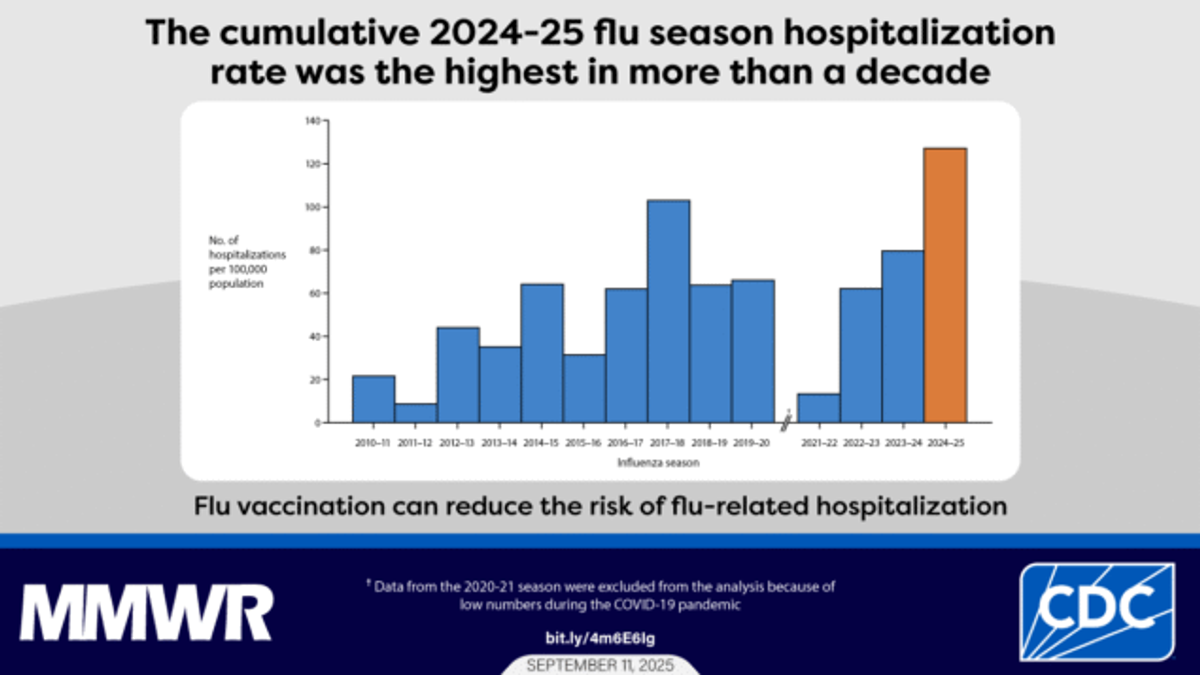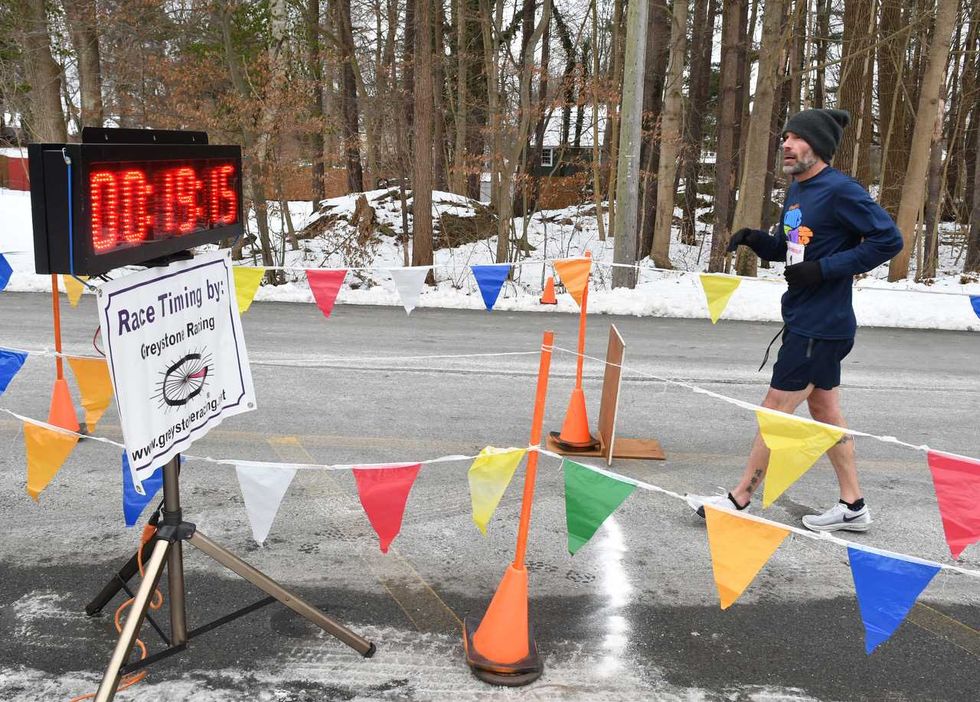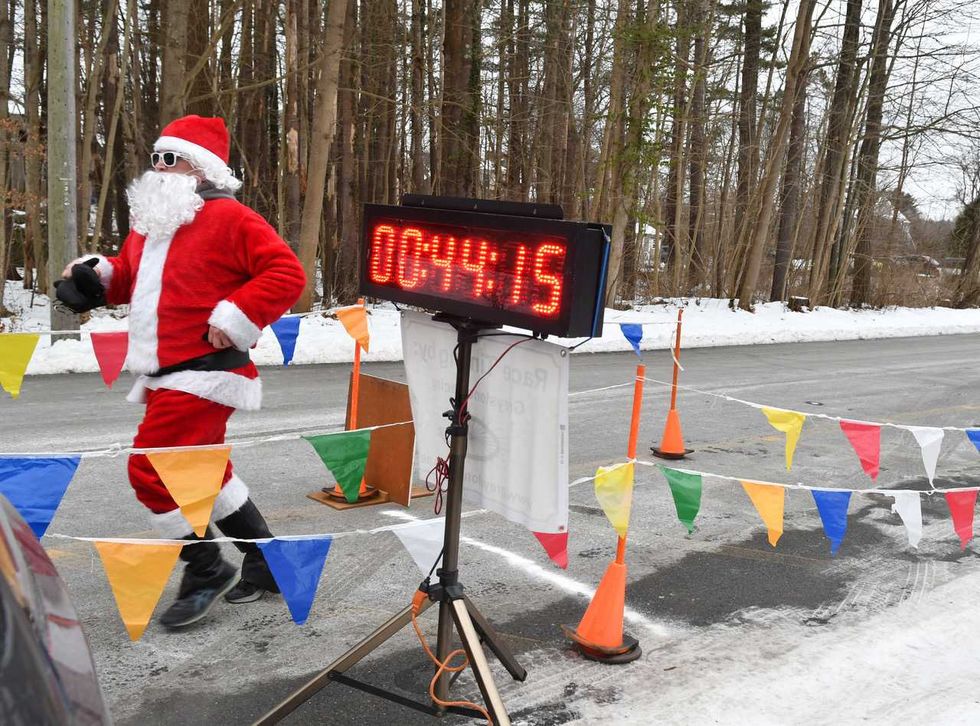Health officials brace for surge with virus season ramping up

This CDC graph shows flu season hospitalization rates by year from 2010 to 2025.
Image from Centers for disease control

This CDC graph shows flu season hospitalization rates by year from 2010 to 2025.
“While this season’s combined peak hospitalization rate is expected to be similar to that of last year, a higher combined peak rate remains possible,” according to the CDC.
As winter approaches in the Northwest Corner, local health officials say a wave of seasonal viral respiratory illness, from flu, RSV, COVID-19 and a mélange of other viruses, may not be far behind.
Already, area clinics are seeing a rise in colds, parainfluenza and stomach viruses, such as norovirus, an early sign that the 2025-2026 respiratory virus season could arrive sooner, and hit harder, than usual.
“So far, we’ve seen a handful of COVID cases, very small amounts of flu. It could be that we simply are not yet in the viral respiratory season yet,” said Dr. Ron Santos, medical director of Sharon Hospital’s Emergency Department.
Santos, who also serves as the hospital’s chief of staff, said some neighboring areas are already feeling the impact.
“Another provider in New Jersey said they are seeing a ton of COVID and flu,” Santos said.
He noted that his wife, a labor and delivery nurse who also works at a CVS pharmacy in Great Barrington, Mass., recently came home and reported an uptick in respiratory illnesses there.
“I think it just hasn’t come up to our neck of the woods yet,” said Santos.
Early signs point to a busy season
The virus season typically begins with RSV (Respiratory Syncytial Virus) starting in October and early November, “and builds momentum around November and December and peaks in January or February,” according to Dr. Ulysses Wu, an infectious disease specialist with Hartford HealthCare.
“We don’t limit respiratory virus season to RSV, covid and flu. We lump them into the annual virus season with 10 or 15 other pathogens out there that people need to be aware of.”
Those include rhinovirus, the most common cause of the common cold; adenovirus, which causes a wide range of illness from mild cold-like symptoms to more severe infections like pneumonia, pink eye and gastroenteritis; pertussis, a highly contagious bacterial infection of the respiratory system; and parvovirus, which is more common in children than adults and causes an itchy rash, among other seasonal pathogens.
Dr. Wu noted that the reason COVID-19, RSV and flu grab the most headlines is because “these are the ones you can get a vaccine for. But we are still seeing all these other respiratory viruses that are happening.”
Vax fatigue, new COVID variant raises concerns
Vaccination rates for both influenza and the updated COVID-19 boosters remain low statewide. Health officials attribute this partly to pandemic fatigue and a misplaced sense of security after last winter’s surge subsided.
The Centers for Disease Control and Prevention (CDC) reported on Aug. 31 that COVID-19 hospitalizations could rise higher than last season, particularly among older adults and those with weakened immune systems, and if a new variant emerges.
In its annual outlook, the agency cited declining vaccine uptake and the potential impact of a new, faster-spreading variant as key risk factors.
“While this season’s combined peak hospitalization rate is expected to be similar to that of last year, a higher combined peak rate remains possible,” according to the CDC.
“This underscores the need to plan and prepare for the possibility of a higher peak,” driven by several factors, including the emergence of a new COVID variant with an increased ability to evade the body’s prior immunity or a new variant associated with higher clinical severity.
The CDC further noted the “predominance of an influenza subtype with more severe outcomes” and lower vaccine uptake or effectiveness could make for a severe season of viral sickness.
Clinicians across the Northwest Corner are reporting early cases of norovirus, parainfluenza and the common cold, with children and older adults most affected.
The start of the 2025-26 school season coincided with a surge in early pediatric cases, according to Dr. Sarah Humphreys, chief medical officer of Community Health & Wellness Center, which operates facilities in North Canaan, Torrington and Winsted.
“Right now, it’s pretty low,” she said of circulating viruses, “but it was peaking around the end of September,” around the same time school reopened and indoor gatherings increased. “It was another type of respiratory virus of which there are hundreds,” she said of the early outbreak.
Simple steps, big impact
Doctors say there’s still time to act.
The best defense includes getting vaccinated, washing hands frequently, staying home when sick, and maintaining good indoor ventilation.
Regarding a slow uptake toward vaccinations, Dr. Wu noted, “People know what they need to get. Some are just drawing a line in the sand about what they are going to get and what they are not going to get. There should be no confusion about it.”
Health professionals also strongly encourage wearing a mask in crowded indoor settings, particularly for those who are older, immunocompromised or live with individuals at higher risk.
Humphreys said she “stands by the original CDC recommendation, which is an annual booster and then every six months,” particularly for those with underlying health conditions such as high blood pressure, diabetes, asthma, COPD, obesity and those concerned about acquiring long COVID, which can lead to “very debilitating symptoms that can last.”
The Connecticut Department of Public Health recommends everyone get the new flu shot each year, unless advised otherwise by your doctor, and most adults can get one COVID-19 shot each year, although adults who are at a higher risk of getting very sick should get two shots.
Adults who are 50 to 74 years old and are high-risk should get one RSV shot, one time. “This is not an annual shot and should not be repeated every year,” according to DPH.
Residents can visit www.ct.gov/dph for vaccination sites and updates on respiratory virus trends across the state.
Runners line up at the starting line alongside Santa before the start of the 5th Annual North Canaan Santa Chase 5K on Saturday, Dec. 13.
NORTH CANAAN — Forty-eight runners braved frigid temperatures to participate in the 5th Annual North Canaan Santa Chase 5K Road Race on Saturday, Dec. 13.
Michael Mills, 45, of Goshen, led the pack with a time of 19 minutes, 15-seconds, averaging a 6:12-per-mile pace. Mills won the race for the third time and said he stays in shape by running with his daughter, a freshman at Lakeview High School in Litchfield.

Don Green, 64, of Red Hook, New York, was second among male runners with a time of 21:17 and a 6:52-per-mile pace. Becky Wilkinson, 47, of Southfield, Massachusetts, was the first woman to cross the finish line with a time of 22:16, averaging a 7:11-per-mile pace. Wilkinson finished fourth overall.
Margaret Banker, 52, of Lakeville, finished second among women runners with a time of 23:59 and a 7:44-per-mile pace.
Runners came from all over Connecticut, Massachusetts and New York. One runner listed home as London, England. Many were members of the Run 169 Towns Society, a group that is dedicated to completing races in every one of Connecticut’s 169 towns. Elizabeth Smith, 32, of Manchester, a member of Run 169, said this was her 162nd town.
“I started 10 years ago,” Smith said. Her husband, Daniel, 33, has run races in 73 Connecticut towns, now including North Canaan. He was eager to know where to get a good cup of coffee after the race.
Santa, who got a head start on the group of runners but finished next to last with a time of 44:14, has been a feature in the North Canaan race since it started five years ago.
The 5K proceeds from a start in front of the North Canaan Elementary School on Pease Street to course around the Town Hall parking lot, up West Main Street past the transfer station to the state line and back. Cheryl Ambrosi, 45, of Danbury, was the last to cross the finish line with her dog Benji. “It was so much fun,” she said as she ended, even though she didn’t catch Santa.

The Torrington Transfer Station, where the Northwest Resource Recovery Authority plans to expand operations using a $350,000 state grant.
TORRINGTON — The Northwest Resource Recovery Authority, a public entity formed this year to preserve municipal control over trash and recycling services in northwest Connecticut, has been awarded $350,000 in grant funds to develop and expand its operations.
The funding comes from the Department of Energy and Environmental Protection via its Sustainable Materials Management grant program. It is intended to help the NRRA establish operations at the Torrington Transfer Station as well as support regional education, transportation, hauler registration and partnerships with other authorities.
Founded by the City of Torrington in May 2025, the NRRA was established to oversee regional municipal solid waste management. Its creation followed a $3.25 million offer by USA Waste & Recycling to purchase the Torrington Transfer Station — a sale that would have privatized trash services in the region.
The proposed sale was initially approved by the MIRA Dissolution Authority, the entity responsible for dissolving the state’s former Materials Innovation and Recycling Authority, which owned the Transfer Station at the time. Before the transaction could close, the state intervened and directed that the facility’s operating permit be assigned to the NRRA to preserve a publicly controlled alternative.
MIRA has since dissolved, and the Transfer Station is currently operated by the state Department of Administrative Services. Many towns in northwest Connecticut have expressed interest in joining the NRRA. As of December, Torrington and Goshen were the only two municipalities in the authority.
At the Dec. 11 meeting of the Northwest Hills Council of Governments (COG) — a regional planning body representing 21 municipalities in northwest Connecticut — Director of Community and Economic Development Rista Malanca encouraged more towns to sign on.
“We need towns to join the Northwest Resource Recovery Authority to show your support, show this is what you want to do,” Malanca said.
Salisbury First Selectman Curtis Rand said his municipality is planning a town meeting in January to vote on a resolution to join the NRRA. Cornwall’s Board of Selectmen recently discussed scheduling a town meeting in the winter for the same purpose. Sharon, Falls Village and North Canaan have also expressed continued interest in pursuing a public option.
Kent is the northernmost member of the Housatonic Resource Recovery Authority, a regional solid waste authority representing 14 municipalities stretching south to Ridgefield. COG towns expressed interest in joining HRRA in 2024, but they were denied and set out to develop the NRRA.
“We also have been having conversations with the Capital Region Council of Governments and the Naugatuck Valley Council of Governments to think about how we can use existing resources, maybe some of these grant funds, to bring in shared resources or shared staffing that will help with some of the recycling coordinating efforts,” Malanca said.
With grant funds secured, NRRA aims to grow to a point that it can take over operations at Torrington Transfer Station to serve as a regional hauling hub. What happens to the trash after that has yet to be determined. Currently, it is being shipped to a landfill out of state. The existing municipal refuse hauling contracts that were established with the state expire in 2027.
The Salisbury Winter Sports Association (SWSA) will host its annual Junior Jump Camp, a two-day introduction to ski jumping, on Saturday and Sunday, Dec. 27 and 28, from 9 a.m. to 2 p.m. at Satre Hill in Salisbury.
The camp is open to children ages 7 and up and focuses on teaching the basics of ski jumping, with an emphasis on safety, balance and control, using SWSA’s smallest hill. No prior experience is required.
The cost is $50 per child and includes instruction and lunch on both days. For more information or to register, visit www.skireg.com/swsa-camp or email info@jumpfest.org
Jesse Bunce, first selectman of North Canaan.
LITCHFIELD — The Northwest Hills Council of Governments welcomed six newly elected municipal leaders Thursday, Dec. 11, at its first meeting following the 2025 municipal elections.
The council — a regional planning body representing 21 towns in northwest Connecticut — coordinates transportation, emergency planning, housing, economic development and other shared municipal services.
Barkhamsted First Selectman Meaghan Cook, Goshen First Selectman Seth Breakell, Kent First Selectman Eric Epstein, Norfolk First Selectman Henry Tirrell, North Canaan First Selectman Jesse Bunce and Torrington Mayor Molly Spino were each elected to their post in November.
They filled the seats of their predecessors on the COG, who were each given a toast of appreciation: Nick Lukiwsky (Barkhamsted), Todd Carusillo (Goshen), Marty Lindenmeyer (Kent), Matt Riiska (Norfolk), Brian Ohler (North Canaan) and Elinor Carbone (Torrington).
COG Executive Director Rob Phillips said the outgoing members were given a going away mug that read “You’re living the dream still.” Members voted to appoint Warren First Selectman Greg LaCava to fill a vacancy on the Council’s Executive Committee. COG members voted by paper ballot, and LaCava defeated Burlington First Selectman Doug Thompson for the vacant seat.